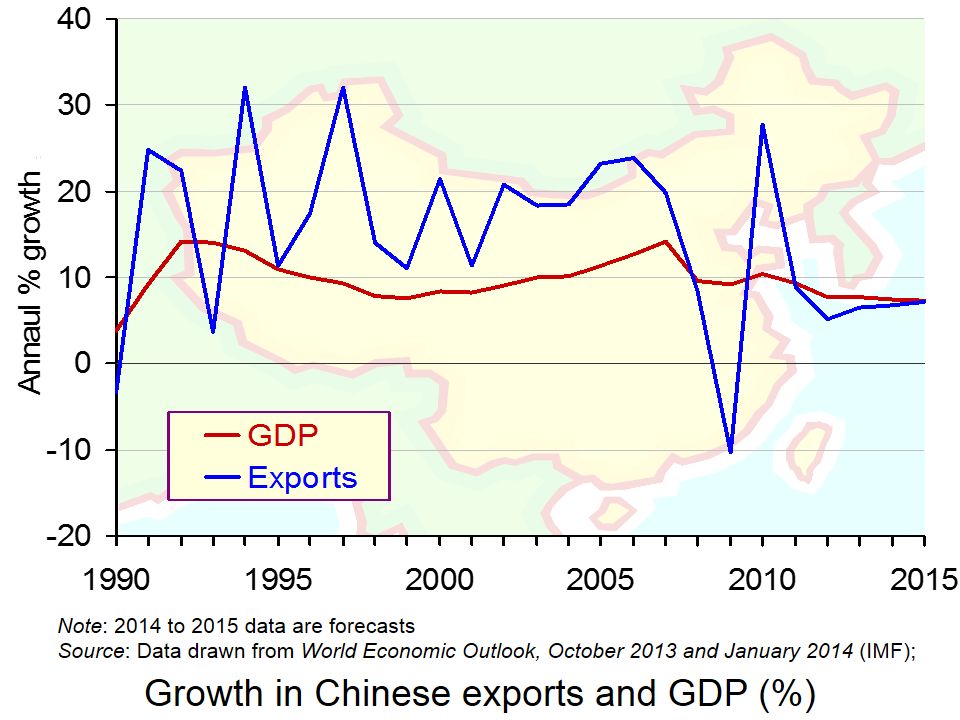 The growth of China over the past decade has been quite phenomenal, with figures recorded in double-digits. However, in the aftermath of the recession, growth has declined to around 7% – much higher than Western economies are used to, but significantly below the ‘norm’ for China. (Click here for a PowerPoint of the chart.)
The growth of China over the past decade has been quite phenomenal, with figures recorded in double-digits. However, in the aftermath of the recession, growth has declined to around 7% – much higher than Western economies are used to, but significantly below the ‘norm’ for China. (Click here for a PowerPoint of the chart.)
The growth target for this year is 7.5%, but there appear to be some concerns about China’s ability to reach this figure and this has been emphasised by a recent Chinese policy.
A mini-stimulus package has been put in place, with the objective of meeting the 7.5% growth target. Government expenditure is a key component of aggregate demand and when other components of AD are lower than expected, boosting ‘G’ can be a solution. However, it’s not something that the Chinese government has had to do in recent years and the fact that this stimulus package has been put in place has brought doubts over China’s economic performance to the forefront , but has confirmed its commitment to growth. Mizuho economist, Shen Jianguang, said:
It’s very obvious that the leaders feel the need to stabilise growth…Overall, the 7.5 per cent growth target means that the government still cares a lot about economic growth.
Data suggest that growth in China is relatively weak and there are concerns that the growth target will be missed, hence the stimulus package. In the aftermath of the 2008 financial crisis, there was a large stimulus package in place in China. This latest investment by the government is in no way comparable to the size of the 2008 package, but instead will be on a smaller and more specific scale. Mark Williams of Capital Economics said:
It’s a bit of a rerun of what we saw last year – something less than a stimulus package and more of piecemeal measures to ensure they reach their growth target.
It is the construction of public housing and railways that will be the main areas of investment this time round. A sum of $120–180bn per year will be available for railway construction and $161bn for social housing, and tax breaks are being extended for small businesses.
The 2008 stimulus package saw debt increase to some 200% of GDP, which did cause growing concerns about the reliance on debt. However, this latest package will be financed through the issue of bonds, which is much more similar to how market economies finance spending.
The fact that the government has had to intervene with such a stimulus package is, however, causing growing concerns about the level of debt and the future of this fast growing economy, though the new method of financing is certainly seen as progress.

It should be noted that a decline in growth for China is not only concerning for China itself, but is also likely to have adverse consequences other countries. In the increasingly interdependent world that we live in, Western countries rely on foreign consumers purchasing their exports, and in recent years it has been Chinese consumers that have been a key component of demand. However, a decline in growth may also create some benefits – resources may not be used up as quickly and prices of raw materials and oil in particular may remain lower.
It is certainly too early for alarm bells, but the future of China’s growth is less certain than it was a decade ago. The following articles consider this issue.
China’s new mini-stimulus offers signs of worry and progress BBC News, Linda Yueh (3/4/14)
China puts railways and houses at hear of new stimulus measures The Guardian (3/4/14)
China unveils mini stimulus to to boost slowing economy The Telegraph (3/4/14)
China stimulus puts new focus on growth target Wall Street Journal, Bob Davis and Michael Arnold (3/4/14)
China embarks on ‘mini’ stimulus programme to kick-start economy Independent, Russell Lynch (3/4/14)
China takes first step to steady economic growth Reuters (2/4/14)
China unveils fresh stimulus The Autstralian (3/4/14)
China’s reformers can triumph again, if they follow the right route The Guardian, Joseph Stiglitz (2/4/14)
Questions
- How has Chinese growth reached double-digits? Which factors are responsible for such high growth?
- The BBC News article suggests that the stimulus package is cause for concerns but also shows progress. How can it do both?
- Using a diagram, illustrate how a stimulus package can boost economic growth.
- What are the advantages and disadvantages of high rates of growth for (a) China and (b) Western economies?
- Why does the method of financing growth matter?
- Railway and housing construction have been targeted to receive additional finance. Why do you think these sectors have been targeted?
 Globalisation has led to an increasingly interdependent world, with companies based in one country often dependent on a market abroad. In recent years, it is the rapid growth of countries like China that has led to growth in the size of the markets for many products. With incomes rising in emerging countries, demand for many products has been growing, but in the past year, the trend for Prada has ended and seems to be reversing.
Globalisation has led to an increasingly interdependent world, with companies based in one country often dependent on a market abroad. In recent years, it is the rapid growth of countries like China that has led to growth in the size of the markets for many products. With incomes rising in emerging countries, demand for many products has been growing, but in the past year, the trend for Prada has ended and seems to be reversing.
As the market in China matures and growth of demand in Europe slows, Prada has seen its shares fall by the largest margin since June last year.
Prada is a well-known luxury brand. The products it sells are relatively expensive and hence its products are likely to have an income elasticity of demand well above +1. With changes in China and Europe, Prada expects its growth in sales to January 2015 will be ‘low single-digit’ – less than the 7% figure recorded for the last financial year.
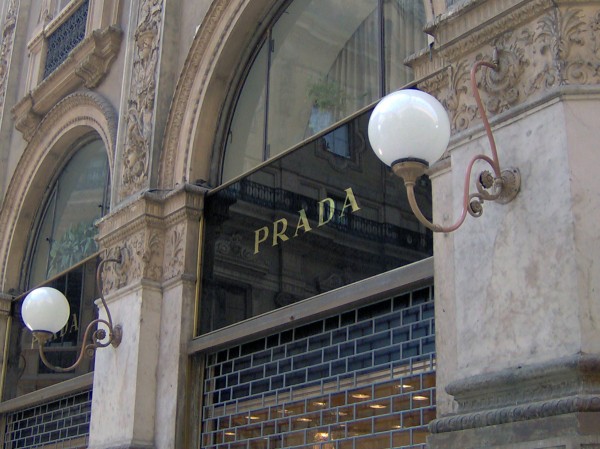 This lower growth in same-store sales is likely to continue the following year as well. Add on to this the lower-than-expected profits, which missed analysts’ forecasts, and you have a prime example of a brand that is suffering because of its customer base and the economic times.
This lower growth in same-store sales is likely to continue the following year as well. Add on to this the lower-than-expected profits, which missed analysts’ forecasts, and you have a prime example of a brand that is suffering because of its customer base and the economic times.
Prada isn’t alone in suffering from economic conditions and, relative to its European counterparts, is expected to have higher growth in sales and profits in the next 12 months – at 11.5% and 14.8% respectively. This is according to a survey by Thomson Reuters.
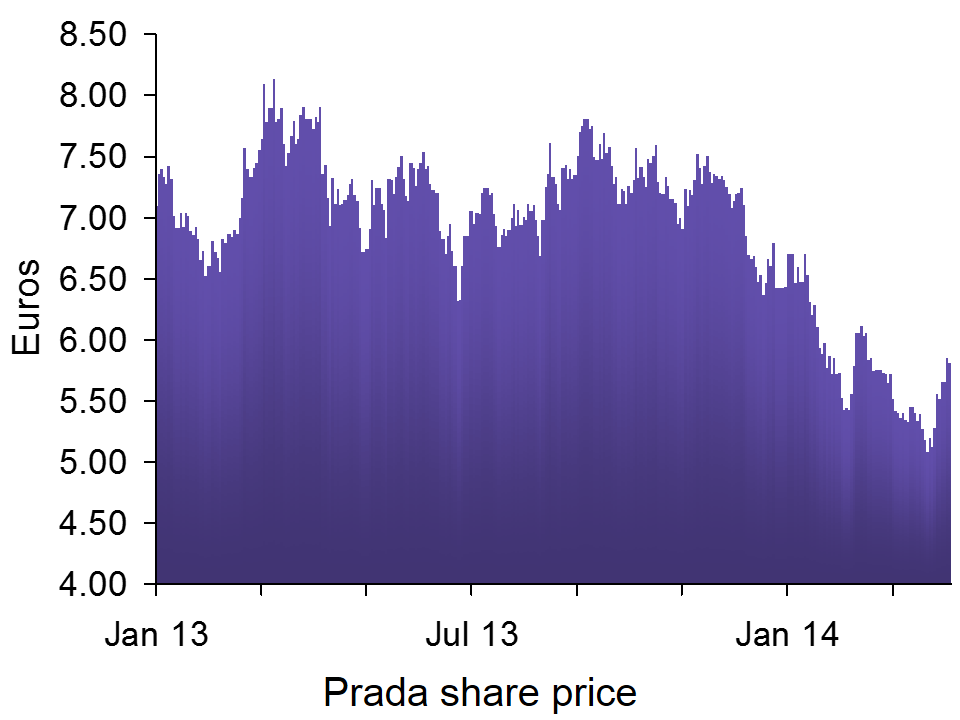 Prada has exploited high demand by Chinese consumers, but has recently been affected by the strength of the euro. A strong euro means that the Italian-based Prada is struggling with exports, which only adds to its problems. As economic growth picks up in China and as other emerging economies begin to experience more rapid economic growth, the fortunes of this luxury-retailer may change once more. However, with volatile economic times still around in many countries, the future of many retailers selling high-end products to higher income customers will remain uncertain. The following articles consider the fortunes of Prada.
Prada has exploited high demand by Chinese consumers, but has recently been affected by the strength of the euro. A strong euro means that the Italian-based Prada is struggling with exports, which only adds to its problems. As economic growth picks up in China and as other emerging economies begin to experience more rapid economic growth, the fortunes of this luxury-retailer may change once more. However, with volatile economic times still around in many countries, the future of many retailers selling high-end products to higher income customers will remain uncertain. The following articles consider the fortunes of Prada.
Prada shares fall sharply after China luxury warning BBC News (3/4/14)
Prada falls after forecasting slowing luxury sales growth Bloomberg, Andrew Roberts and Vinicy Chan (3/4/14)
Prada profits squeezed by weakness in Europe and crackdown in China The Guardian (2/4/14)
Prada bets on men to accelerate sales growth Reuters, Isla Binnie (2/4/14)
Prada misses full year profit forecast Independent, Laura Chesters (2/4/14)
Questions
- How can we define a luxury product?
- Explain the main factors which have led to a decline in the demand for Prada products over the past 12 months.
- Using a diagram, illustrate what is meant by a strong euro and how this affects export demand.
- What business strategies are Prada expected to adopt to reverse their fortunes?
- Using a diagram, explain the factors that have caused Prada share prices to decline.
 Profits are maximised where marginal cost equals marginal revenue. And in a perfectly competitive market, where price equals marginal revenue, profits are maximised where marginal cost equals price. But what if marginal cost equals zero? Should the competitive profit-maximising firm give the product away? Or is there simply no opportunity for making a profit when there is a high degree of competition?
Profits are maximised where marginal cost equals marginal revenue. And in a perfectly competitive market, where price equals marginal revenue, profits are maximised where marginal cost equals price. But what if marginal cost equals zero? Should the competitive profit-maximising firm give the product away? Or is there simply no opportunity for making a profit when there is a high degree of competition?
This is the dilemma considered in the articles linked below. According to Jeremy Rifkin, what we are seeing is the development of technologies that have indeed pushed marginal cost to zero, or close to it, in a large number of sectors of the economy. For example, information can be distributed over the Internet at little or no cost, other than the time of the distributor who is often willing to do this freely in a spirit of sharing. What many people are becoming, says Rifkin, are ‘prosumers’: producing, sharing and consuming.
Over the past decade millions of consumers have become prosumers, producing and sharing music, videos, news, and knowledge at near-zero marginal cost and nearly for free, shrinking revenues in the music, newspaper and book-publishing industries.
What was once confined to a limited number of industries – music, photography, news, publishing and entertainment – is now spreading.
A new economic paradigm – the collaborative commons – has leaped onto the world stage as a powerful challenger to the capitalist market.
A growing legion of prosumers is producing and sharing information, not only knowledge, news and entertainment, but also renewable energy, 3D printed products and online college courses at near-zero marginal cost on the collaborative commons. They are even sharing cars, homes, clothes and tools, entirely bypassing the conventional capitalist market.
So is a collaborative commons a new paradigm that can replace capitalism in a large number of sectors? Are we gradually becoming sharers? And elsewhere, are we becoming swappers?
Articles
Capitalism is making way for the age of free The Guardian, Jeremy Rifkin (31/3/14)
The End of the Capitalist Era, and What Comes Next Huffington Post, Jeremy Rifkin (1/4/14)
Has the Post-Capitalist Economy Finally Arrived? Working Knowledge, James Heskett (2/4/14)
Questions
- In what aspects of your life are you a prosumer? Is this type of behaviour typical of what has always gone on in families and society?
- If marginal cost is zero, why may average cost be well above zero? Illustrate with a diagram.
- Could a monopolist make a profit if marginal cost was zero? Again, illustrate with a diagram.
- Is it desirable for there to be temporary monopoly profits for inventors of new products and services?
- What is meant by a ‘collaborative commons’? Do you participate in such a commons and, if so, how and why?
- Should tweets and Facebook posts be regarded as output?
- What is meant by an internet-of-things infrastructure?
- What are the incentives for authors to contribute to Wikipedia?
- Could marginal cost ever be zero for new physical products?
- Think about the things you buy in the supermarket. Could any of these be produced at zero marginal cost?
- How can capitalists make profits as ‘aggregators of network services and solutions’?
- Provide a critique of Rifkin’s arguments.
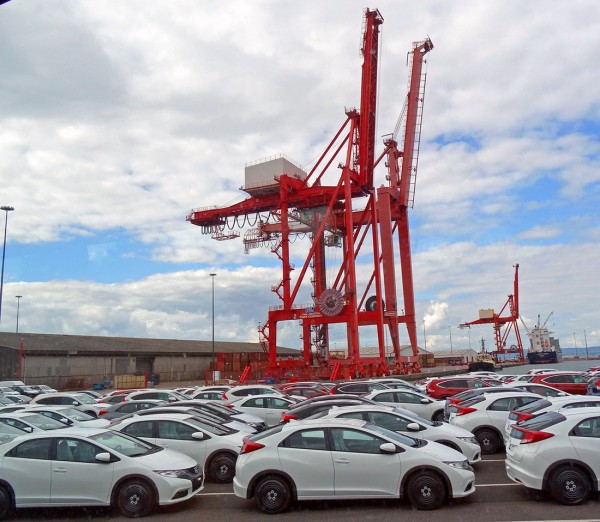 The latest balance of payments data for the UK show that in the final two quarters of 2013 the current account deficit as a percentage of GDP was the highest ever recorded. In quarter 3 it was 5.6% of GDP and in quarter 4 it was 5.4% of GDP. The previous highest quarterly figures were 5.3% in 1988 Q4 and 5.2% in 1989 Q3. The average current account deficit from 1960 to 2013 has been 1.1% of GDP and from 1980 to 2013 has been 1.6% of GDP.
The latest balance of payments data for the UK show that in the final two quarters of 2013 the current account deficit as a percentage of GDP was the highest ever recorded. In quarter 3 it was 5.6% of GDP and in quarter 4 it was 5.4% of GDP. The previous highest quarterly figures were 5.3% in 1988 Q4 and 5.2% in 1989 Q3. The average current account deficit from 1960 to 2013 has been 1.1% of GDP and from 1980 to 2013 has been 1.6% of GDP.
The current account has four major components: the balance on goods, the balance on services, the balance on current transfers and the balance on income flows (e.g. investment income). The chart below shows the annual balances of each of these components, plus the overall current account balance, from 1960 to 2013.
There are large differences in the balances of these four and the differences seem to be widening. (Click here for a PowerPoint of the chart.)
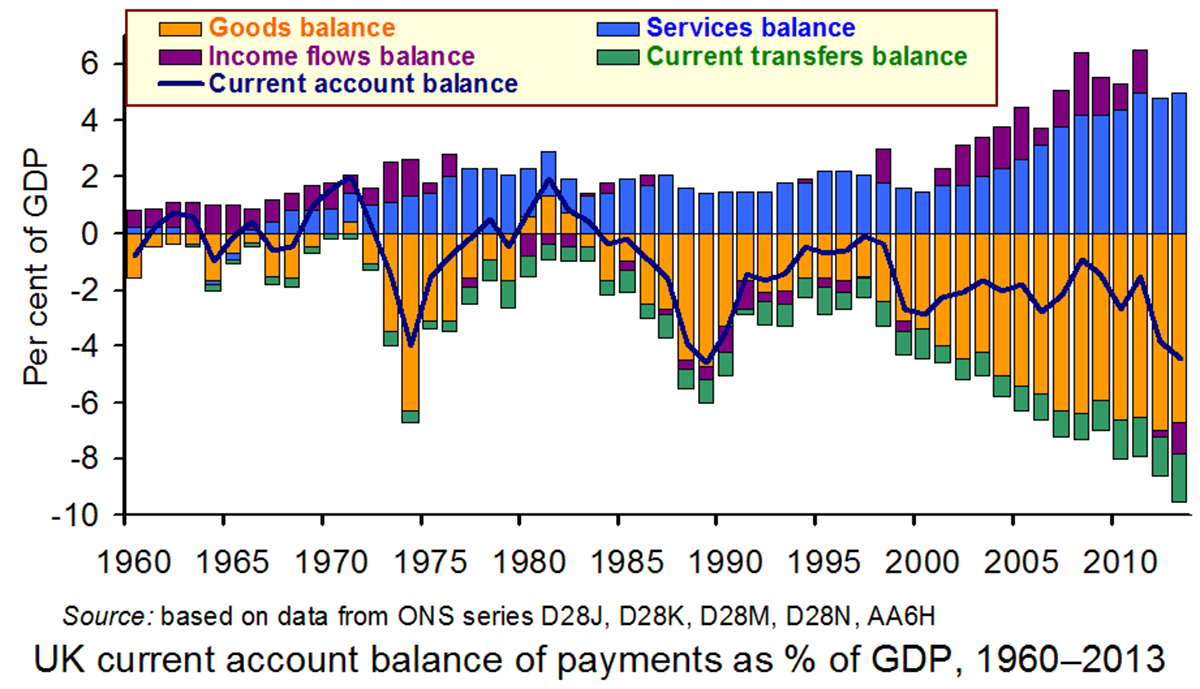
Traditionally the balance on goods has been negative. In 2013 Q3 the deficit on goods reached a record 7.3% of GDP. It fell back somewhat in Q4 to 6.5%, still significantly above the average since 2000 of 5.5%. With the economy still recovering slowly, it would normally be expected that the trade deficit would be low. However, the high exchange rate has made it difficult for UK exporters to compete. Also with consumer confidence returning, imports are rising, again boosted by the high exchange rate, which makes imports cheaper.
The services balance, by contrast, is typically in surplus. In the final two quarters of 2013, the surpluses were 4.9% and 5.1% of GDP respectively. These compare with an average of 3.3% since 2000. It seems that the service sector, which includes banking, insurance, consultancy, advertising, accountancy, law, etc., is much more able to compete in a global environment.
The balance of current transfers to and from such bodies as the EU and UN have traditionally been negative, although as a proportion of GDP this has gradually widened in recent years. In 2013 the deficit was 1.7% compared with an average of 1.0% since 2000.
 The most dramatic change has been in income flows and particularly those from investment. Before the crash in late 2008, the returns to many of the risky investments abroad made by UK financial institutions were very high. Income flows in the 12 months 2007 Q4 to 2008 Q3 averaged a surplus of 2.8% of GDP. They stayed positive, albeit at lower levels, until 2012 Q1, but then became negative as UK institutions reduced their exposure to overseas investments and as earnings in the UK by overseas investors increased. In the last two quarters of 2013, the deficits on income flows were 1.4% and 2.5% of GDP respectively.
The most dramatic change has been in income flows and particularly those from investment. Before the crash in late 2008, the returns to many of the risky investments abroad made by UK financial institutions were very high. Income flows in the 12 months 2007 Q4 to 2008 Q3 averaged a surplus of 2.8% of GDP. They stayed positive, albeit at lower levels, until 2012 Q1, but then became negative as UK institutions reduced their exposure to overseas investments and as earnings in the UK by overseas investors increased. In the last two quarters of 2013, the deficits on income flows were 1.4% and 2.5% of GDP respectively.
How do these figures accord with the Chancellor’s desire to rebalance the economy towards exports? In terms of services, the export performance is good. In terms of goods, however, exports actually fell in the last two quarters from £78.4bn to £74.8bn. Although imports fell too in the final quarter, there is a danger that, with recovery and a high pound, these could begin to rise rapidly
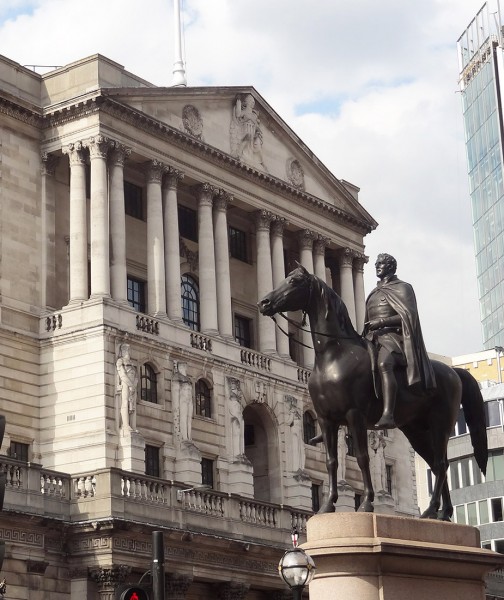 So should the Bank of England attempt to bring the sterling exchange rate down? After all, the exchange rate index has risen from 79.1 in March 2013 to 85.9 in February 2014 (an appreciation of 8.6%). But if it did want to do so, what could it do? The traditional methods of reducing Bank rate and increasing the money supply are not open to it at the present time: Bank rate, at 0.5%, is already about as low as it could go and the Bank has ruled out any further quantitative easing.
So should the Bank of England attempt to bring the sterling exchange rate down? After all, the exchange rate index has risen from 79.1 in March 2013 to 85.9 in February 2014 (an appreciation of 8.6%). But if it did want to do so, what could it do? The traditional methods of reducing Bank rate and increasing the money supply are not open to it at the present time: Bank rate, at 0.5%, is already about as low as it could go and the Bank has ruled out any further quantitative easing.
The articles consider the latest balance of payments figures and their implications for the economy and for economic policy
Articles
UK current account deficit far bigger than forecast The Guardian, Katie Allen (28/3/14)
UK current account deficit near record high at £22.4bn BBC News (28/3/14)
UK current account gap second widest on record The Telegraph, Szu Ping Chan (28/3/14)
When will the UK pay its way? BBC News, Robert Peston (28/3/14)
Current account deficit crisis creeping up on UK can no longer be ignored The Guardian, Larry Elliott (30/3/14)
Data
Balance of Payments, Q4 and annual 2013 ONS (28/3/14)
Statistical Interactive Database – interest & exchange rates data Bank of England
Questions
- If the current account is in deficit, how is the overall balance of payments in balance (i.e. is in neither deficit nor surplus)?
- If the current account is in record deficit, why has sterling appreciated over recent months? What effect is this appreciation likely to have on the balance on trade in goods and services?
- Why has the balance on investment income deteriorated? In what ways could this be seen as a ‘good thing’?
- To what extent do the balance of payments figures show a rebalancing of the economy in the way the Chancellor would like?
- What could the Bank of England do to bring about a depreciation of sterling?
- What would be the benefits and costs of a depreciation of sterling?
- Why do investors overseas seem so willing to lend to the UK, thereby producing a large surplus on the financial account?
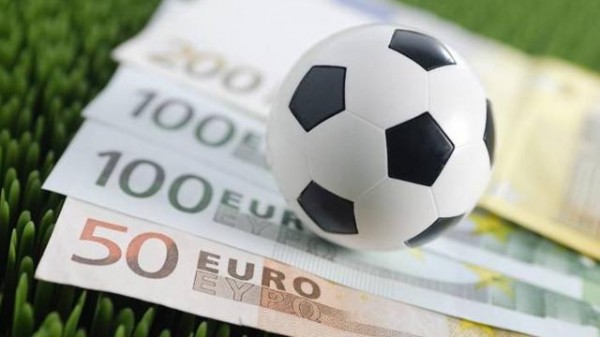 A previous article on this website (Why buy a football club?) focused on the issue of why people buy football clubs. This blog refers to the somewhat strange situation where people who have made large amounts of money from a very successful business career always seem to lose money when they invest in a football team.
A previous article on this website (Why buy a football club?) focused on the issue of why people buy football clubs. This blog refers to the somewhat strange situation where people who have made large amounts of money from a very successful business career always seem to lose money when they invest in a football team.
The Deloitte’s report into football finance found that in the 2012/13 season only half the clubs in the English Premier League (EPL) made an operating profit – profits excluding net transfer expenditure. When the impact of transfer expenditure is included, even fewer clubs make any money. For example, the three teams battling it out for the EPL title this year, Chelsea, Liverpool and Manchester City, reported losses for 2012/13 of £49.4 million, £49.8 million and £51.6m respectively.
What makes the size of these losses even more astonishing is that they have occurred in a period when the revenues earned by the top clubs have increased rapidly. In 2004/05 the combined revenue of the 20 EPL clubs was £1.3billion. By 2011/12 this figure had increased to £2.36 billion.
Given these rapidly rising revenue streams, the main explanation for this poor profit performance is the growth in players’ salaries. It has been estimated that approximately 80% of the increase in revenues generated by the team in the EPL since it began in 1992 have gone to the players in higher wages. In 2011/12 the total wage bill in the EPL was a staggering £1.658 billion, with an average wage bill of £83 million per club. The average weekly wage of a player has doubled over the past six years and is now estimated to be between £25,000 and £30,000 per week.
One deal which recently hit the headlines was that of Wayne Rooney who signed a five-year contract with earnings of up to £300,000 a week or £15.6m annually. However, Mr Rooney is still a long way short of the highest paid sports star. When based on wages and win bonuses, Forbes reported this to be American footballer, Aaron Rodgers, who was paid £25.75m in 2012-13!!!
One major factor that can partly explain this rapid increase in players’ pay is the increased competition for their skills. The potential impact of the transfer system on players’ mobility and wages was discussed in an article on the website in December (Recent challenges to the football transfer system). The career of Tom Finney provides an interesting case study of the impact of the monopsony power that the transfer system and maximum wage used to give the clubs.
Finney was one of the most talented footballers of the 1940s/50s but he played at a time when there was still a maximum wage and a transfer system that was far more restrictive that it is today. He first played in the youth team for Preston North End in 1936 aged 14. Apart for a three-year period between 1942 and 1945 when he served in the army during the Second World War, he remained with Preston for his whole career. He finally retired in 1959 at the age of 38 having scored 210 goals in 473 appearances. He also played in three World Cup final tournaments and scored 30 goals in his 76 international appearances for England.
He also played in three World Cup final tournaments and scored 30 goals in his 76 international appearances for England.
When he died in February of this year many people talked of his loyalty to Preston and the fact that he only earned £20/week when he retired (the maximum wage at the time) and had to supplement his income by working as a plumber. However, interestingly in 1952 an Italian club – Palermo – tried to sign Finney from Preston on a deal which would have paid him a basic weekly wage of £32.25, a bonus of up to £100 per week and a signing on fee of £10,000. At the time he earned the maximum wage of £14 per week with Preston and received a win bonus of up to £2 per week. Palermo also offered him a luxury Mediterranean villa, a brand new sports car and unlimited travel between England and Italy funded by the club. Unsurprisingly, Finney was tempted by the deal and commented that:
There was a genuine appeal about the prospect of trying my luck abroad, not to mention the money and the standard of living.
However, because of the transfer system in place at the time, Preston could block the move. The chairman explained to Finney:
Tom, I’m sorry, but the whole thing is out of the question, absolutely out of the question. We are not interested in selling you and that’s that. Listen to me, if tha’ doesn’t play for Preston then tha’ doesn’t play for anybody.
The club also announced that they would not consider selling Finney for any transfer fee below £50,000. Palermo had offered £30,000 and the transfer record at the time was less that £20,000.
It is highly unlikely that football will ever return to a type of transfer system and maximum wage that gives the clubs the sort of monopsony power they had in Finney’s days. However a new set of policies have been recently agreed and introduced to try to slow down the increase in players’ pay. Financial Fair Play rules set limits on the size of financial losses that clubs can incur over a three-year period. If these rules are broken, then UEFA could prevent the guilty team from entering lucrative competitions such as the Champions League. The EPL also has the power to award points deductions.
With the combined revenues of the 20 EPL clubs forecast to increase by 24% to £3.080 billion in the 2013/14 season, it will be interesting to see how much of this money improves the financial performance of the clubs and how much goes into players’ wages.
Articles
Questions
- Draw a diagram to illustrate the impact of a maximum wage on a perfectly competitive labour market and explain your answer.
- Analyse the impact of the maximum wage on worker surplus, firm surplus and deadweight welfare loss. Draw a diagram to illustrate your answer. Comment on the impact of the maximum price on economic efficiency.
- Draw a diagram to illustrate the impact of a maximum wage on a monopsonistic labour market. Assess its impact on economic efficiency.
- Some authors have argued that the Financial Fair Play regulations are a form of vertical restraint/agreement. What is a vertical restraint?
- Find an example of a vertical restraint in a different industry. What impact will it have on economic welfare?
 The growth of China over the past decade has been quite phenomenal, with figures recorded in double-digits. However, in the aftermath of the recession, growth has declined to around 7% – much higher than Western economies are used to, but significantly below the ‘norm’ for China. (Click here for a PowerPoint of the chart.)
The growth of China over the past decade has been quite phenomenal, with figures recorded in double-digits. However, in the aftermath of the recession, growth has declined to around 7% – much higher than Western economies are used to, but significantly below the ‘norm’ for China. (Click here for a PowerPoint of the chart.)









